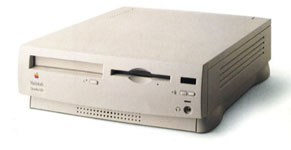



July 13, 2016
What later became H-Pi Instruments had its first incarnation as a doctoral dissertation proposal at the University of Minnesota, where I was a teaching assistant enrolled in the doctoral program for music theory and composition in 1999. My idea in a nutshell was this: I envisioned a body of work based on a musical system accounting for all possible pitches and intervals, consistent and universal in terms of its theory, notation, instruments, and performance practice. If you've been following the last few blog entries, you'll know that there are many years of development leading up to this concept, but at this point in the story I've only just hit upon the idea, so it couldn't possibly be very clearly formed. I thought it made sense to cast the work as a PhD thesis, so that I would get to do what I really wanted to do, and at the end of it I would also be rewarded academically with a terminal degree.
Needless to say, what actually happened turned out a bit differently than planned. I sketched the idea generally, and received verbal approval from my teachers at the University, but the proposal was never formally submitted. Ironically, during the time I was enrolled in the doctoral program at U Minn, I wasn't able to get very far with my work. I submitted a paper to Music Theory Midwest about the concept behind the 12ET piano music — the system of large-numbered ratios of Just Intonation (sometimes called Rational Intonation) mentioned previously, and I gave a presentation at a small college somewhere in Minnesota (I've forgotten where exactly). I also gave a lecture on tuning at U Minn, along with a demonstration of the aforementioned piano music, with the help of some graduate student performers. My presentations were pretty rough, but response was positive.

The program at U Minn was in general not a good fit for me, and I decided to leave at the beginning of the second term. The main problem was that the teaching assistantship was not allowing me to get much of my own work done. I was being forced to teach too much, with duties I considered way beyond what should be asked of an assistent. I wasn't able to seriously pursue my research. I was also unable to enroll in the classes that interested me because of scheduling conflicts. I needed a different environment, and luckily I found it, with the help of a fellow student, at the Borders Bookstore in Richfield, MN.
Working in the relatively relaxed environment of Borders, with no academic responsibilities, I was able to focus on my own work in a way that simply wasn't possible at the University. Most of my research was done in libraries, but it was during that time that I also discovered new sources of information via the internet. Those were still the relatively early days of the internet — hard to imagine in the context of today's instant and endless search results, but back then it was a lot more difficult to find things, and there was also a lot less online to find. For research, the internet felt quite different from the library, for obvious reasons. The library was great for historical publications, but didn't seem to have much about what was currently happening. The combination of books in print and the new virtual information highway of the internet started to give me a pretty good grasp of the history and current state of development in microtuning.
So it happened, on the cusp of the 21st Century, through the bourgeoning internet, that I reached out and made two important connections via email: to a composer and pianist in England named Patrick Ozzard-Low, through his 21st C Orchestral Instruments website, and to an electronics engineer in Bulgaria named Jordan Petkov, through his experimental hobbyist MIDI projects website. With Patrick I began a dialog about his work and how it related to my research. With Jordan I began discussing plans for MIDI devices that would perform microtuning functions. Had these relationships not formed, the tonal plexus would not exist. 17 years later, our conversations continue.
Contact made through the internet across the globe is commonplace now, but in the 1990's it was something novel, and quite astonishing. Some amazing technology had developed over the previous decade to allow these kinds of connections to happen. This seems to me a good example of how developing technologies have played and continue to play a vital role in this story.

By 1999, computers had become very different kinds of animals than those I had known in the 1980's. After the Commodore 64 in 1984, my first computer had been an Apple Macintosh Performa 6300, bought new in 1995. I adopted the Mac platform because of a Mac-only piece of software called Overture, which offered a fast, natural workflow for composing music. Computers had changed from programming hobbyist tools into dedicated professional tools that seemed more like magic boxes than computers to me. With the Mac I was cranking out professional-looking scores on a laser printer without typing a single line of code. With the Commodore 64, I had been hacking out games with music and sound effects in reams upon reams of code stored on 5 1/4" floppy disks. And I had been accidentally programming everything in Just Intonation. I started asking myself: What had I been doing back then, and what could I do differently, now that I understood what was going on? While I continued to use the Mac for composing music and connecting to the internet, I returned to programming on the Commodore 64 to begin seriously exploring the vast possibilities of Just Intonation.

Amidst these experiments and the new relative freedom I found with bookstore employment, I concluded that the city of Minneapolis just wasn't the right place for me, and I decided to leave. I didn't know where to go, and I reached out for help to old friends from college. Three people in Chicago came to my rescue. One very generous friend, Tobin Langridge, drove his van all the way from Chicago to Minneapolis to help me move. He also housed the 4-rank Moeller pipe organ in his garage for the next three years. An old college roommate of mine, Brian Allemana, after earning his degree in music composition, had learned to program websites and landed a well paying job as a web programmer, and sent me a package of thick, expensive books about web programming: HTML and Javascript. Fellow percussionist Darren Scorza was looking for a roommate at the time, just as Brian had just left their housemates arrangement. Through Borders, I was able to transfer to a new job in Wilmette, a north suburb of Chicago. In the Windy City I would have the support of these and other old friends from college. It was the right move at the right time, and everything fell into place.
The story will continue from there next time.
Until then,
Aaron
[ Showing 1 entry | Previous entry | Next entry | Show all entries ]